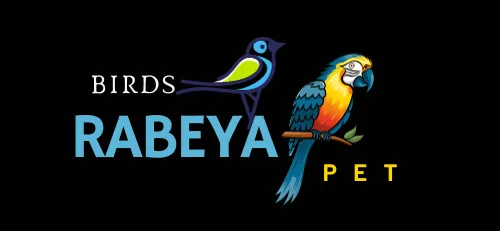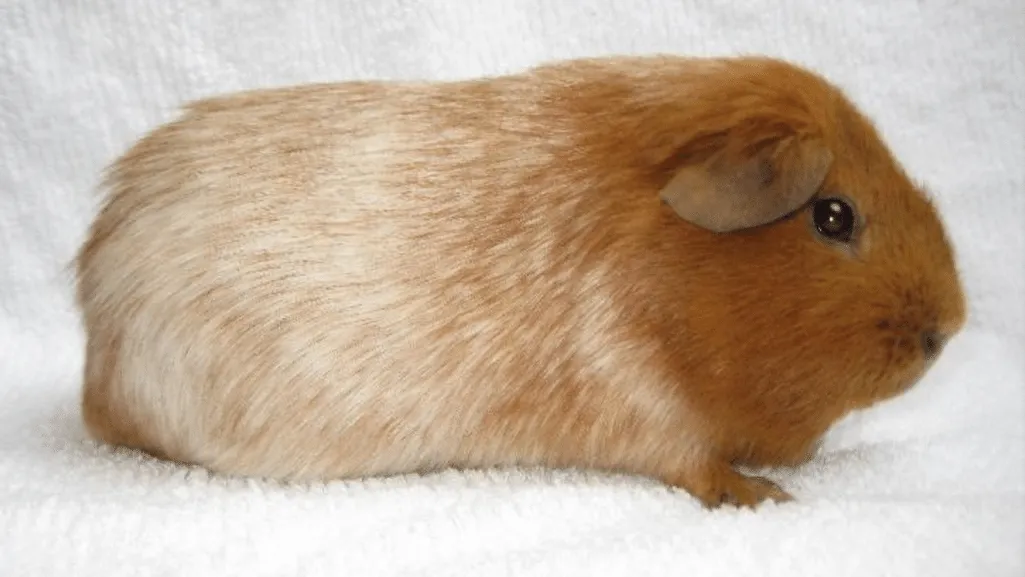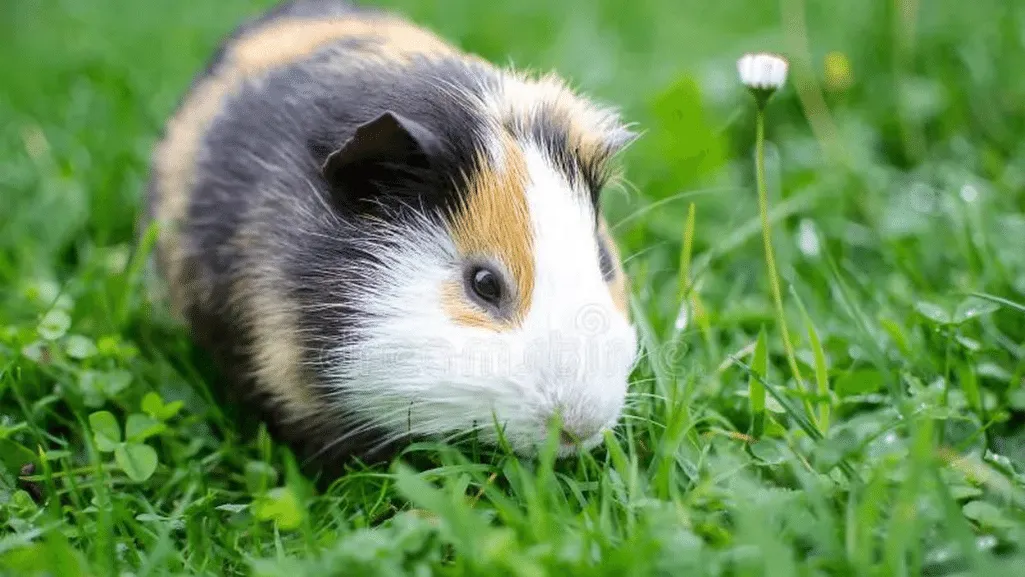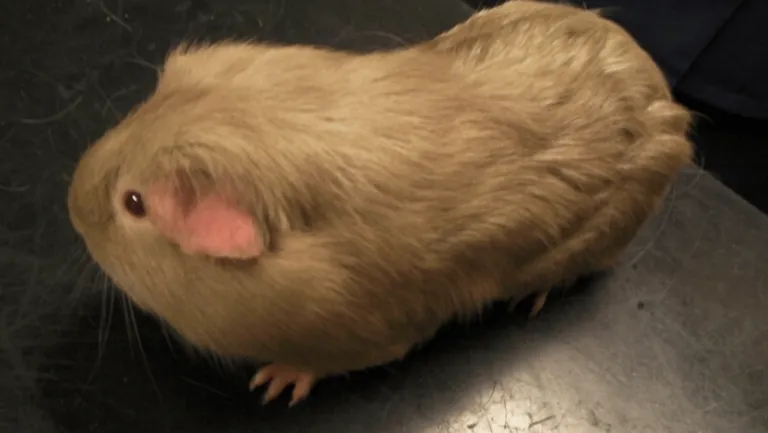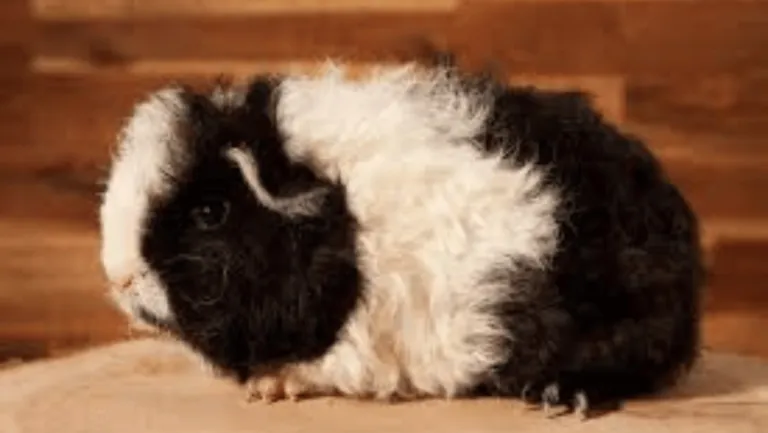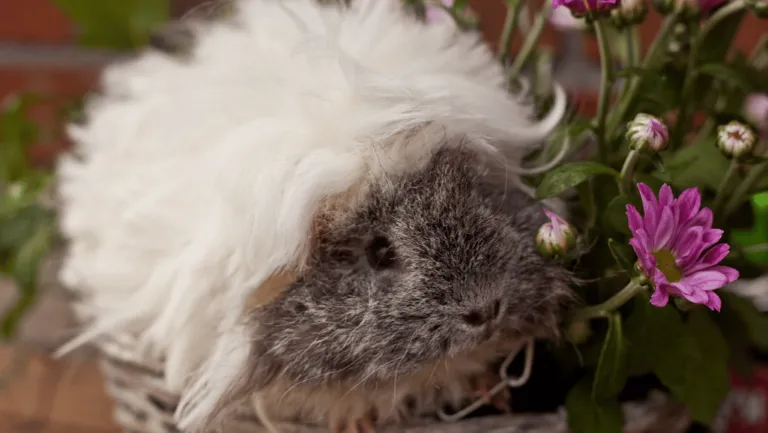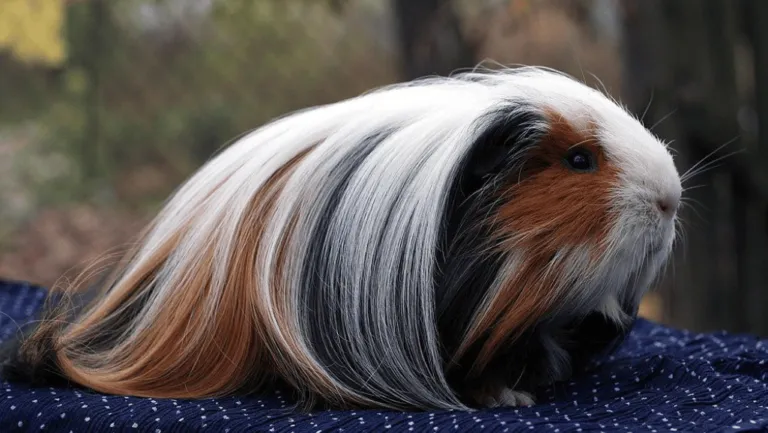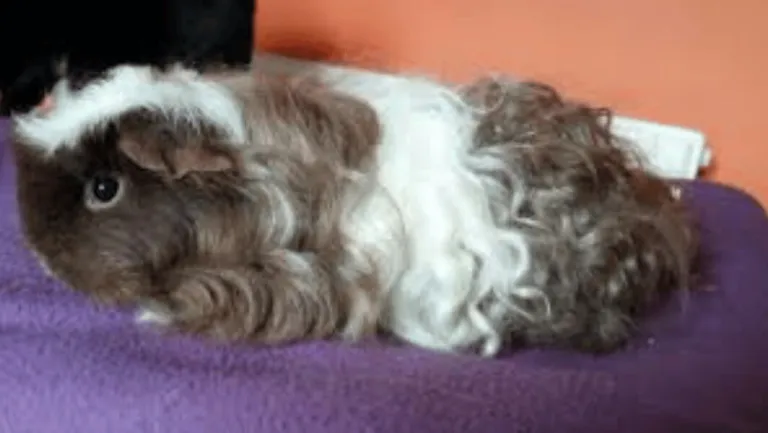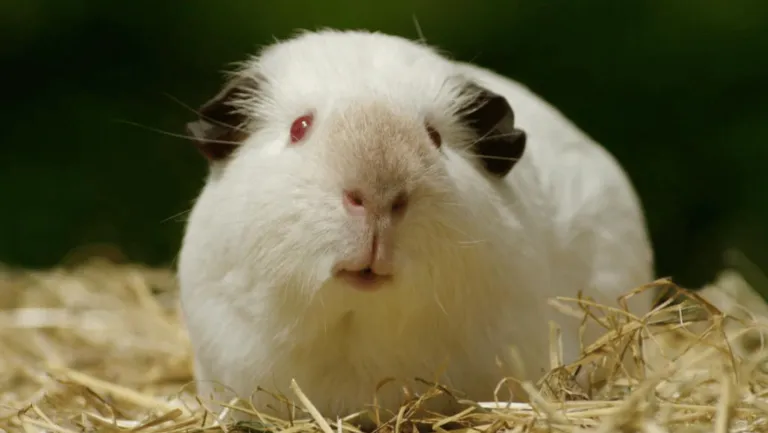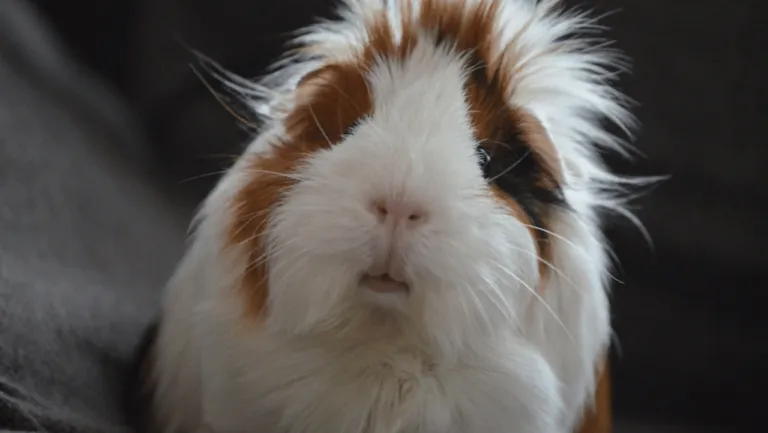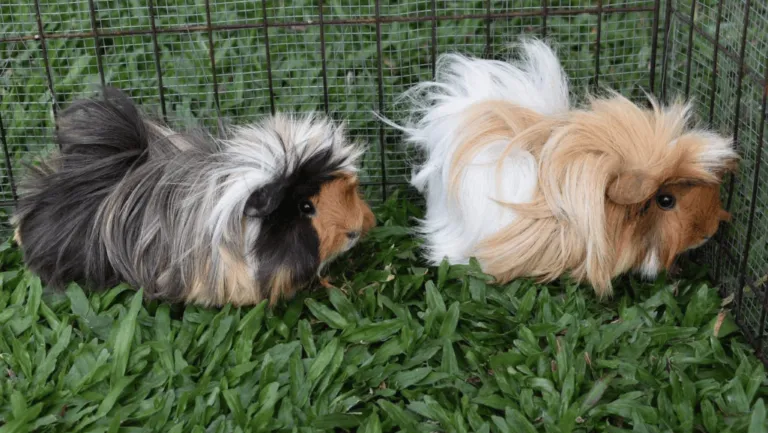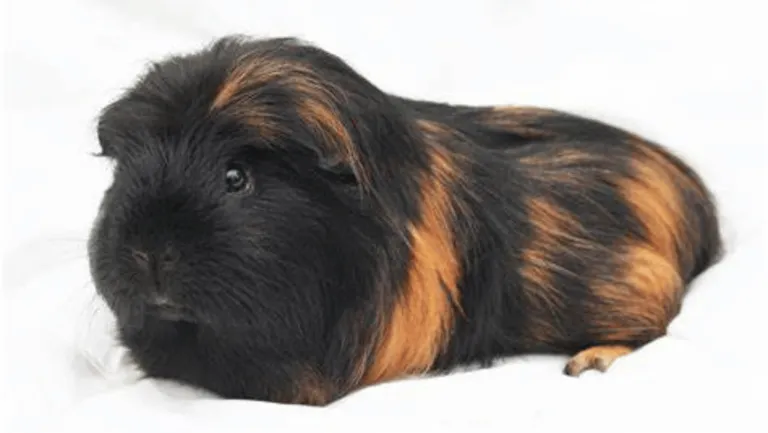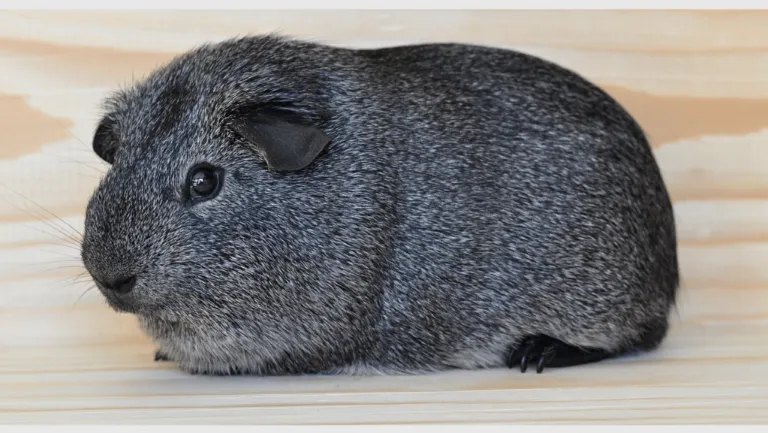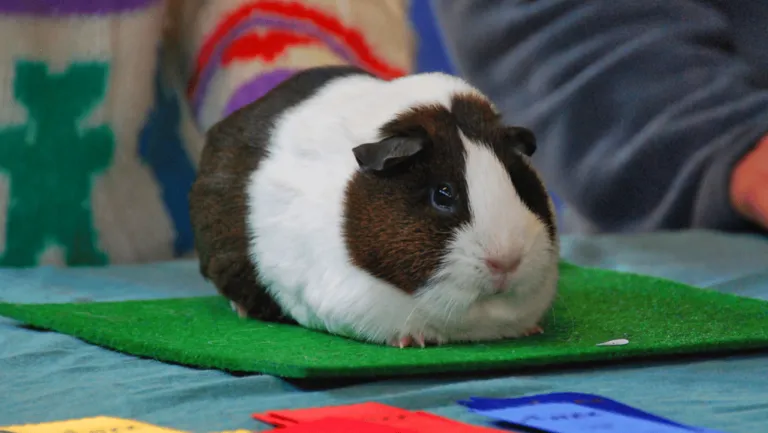Guinea pigs are beloved pets known for their adorable squeaks and gentle nature. These pet rodents come in a variety of breeds, colors, and coat types, each with its own unique charm. One such fascinating variety is the Roan guinea pig, known for its dappled fur pattern. Let’s explore more about Roan guinea pigs and the beauty they bring to the world of cavies and pet rodent enthusiasts.
Key Takeaways:
- Roan guinea pigs have a speckled pattern of white fur on a solid-colored base.
- They can be found in different breeds such as American, Abyssinian, Peruvian, and more.
- Roaning is caused by the presence of the roan gene and can occur all over the body or in limited places.
- Breeding two roan guinea pigs can result in the birth of lethal whites with various birth defects.
- Caring for a lethal white guinea pig requires specialized care and regular veterinary support.
How Many Breeds of Guinea Pigs Are There?
The world of guinea pigs is filled with diversity, with numerous breeds each showcasing their unique characteristics. The number of guinea pig breeds varies depending on the country and guinea pig association. Let’s take a look at some of the officially recognized breeds, as well as a few rare and unrecognized varieties.
Officially Recognized Breeds
- American guinea pig
- White crested guinea pig
- Abyssinian guinea pig
- Peruvian guinea pig
- Silkie guinea pig
- Coronet guinea pig
- Teddy guinea pig
- Texel guinea pig
- Sheba guinea pig
- Lunkarya guinea pig
These breeds are officially recognized by guinea pig associations such as the British Cavy Council and the American Cavy Breeders Association. Each breed boasts its own distinct traits and appearances, providing a wide range of options for potential guinea pig owners.
In addition to the officially recognized breeds, there are also rare and unrecognized varieties of guinea pigs. These breeds may not have received official recognition but still hold their own charm and appeal to guinea pig enthusiasts. Some of these rare breeds include:
- Merino guinea pig
- Alpaca guinea pig
- Rex guinea pig
- Ridgeback guinea pig
These unique guinea pig breeds may be harder to find but offer a special addition to any guinea pig lover’s collection.
With the variety of officially recognized breeds and the allure of rare and unrecognized varieties, the guinea pig world is full of exciting options for those looking to become guinea pig owners.
Roaning in Guinea Pigs
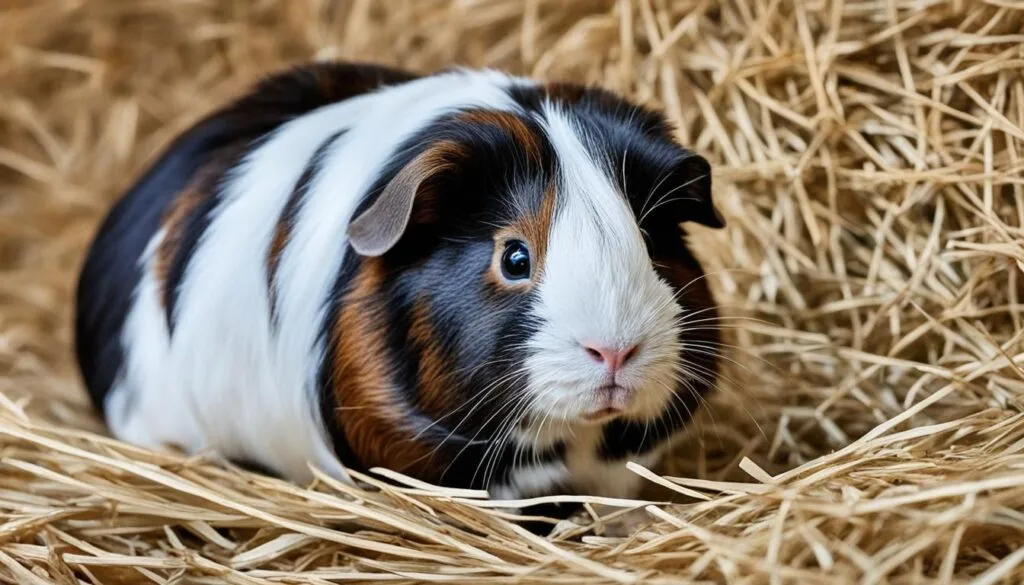
Roaning refers to the speckling of white fur on a guinea pig’s coat. It is caused by the presence of the roan gene. Roaning can occur all over the body or in limited places, depending on the individual guinea pig. If a guinea pig already has white patches on its coat, the roaning may only express in those areas.
Roaning is not typically a cause for concern, but it is important to avoid breeding two roan guinea pigs together as it can result in a lethal white guinea pig with various birth defects.
How Roaning is Expressed
Roaning is a fascinating genetic trait that adds unique patterns to a guinea pig’s coat. Some guinea pigs may have an even distribution of white speckles, resembling a salt-and-pepper effect, while others may have clusters of white fur concentrated in specific areas. The extent of roaning can vary significantly from guinea pig to guinea pig.
It is worth noting that the roaning gene may interact with other genes responsible for coat patterns, resulting in different expressions. This can create an even more diverse range of roan guinea pigs with various speckling patterns and coat colors.
The Roan Gene and Breeding Considerations
The roan gene is responsible for the speckling of fur in guinea pigs. This gene is inherited from the parents and can be passed down to the offspring. While roaning is generally harmless and adds aesthetic appeal to a guinea pig’s appearance, it is important to exercise caution when breeding roan guinea pigs.
Breeding two roan guinea pigs together can result in the birth of a lethal white guinea pig. Lethal whites have significant health issues, including blindness, deafness, and various birth defects. These guinea pigs require extensive veterinary care and have a shorter life expectancy. Responsible breeders are aware of this risk and avoid intentionally breeding for lethal whites.
Lethal Whites: Understanding the Genetic Risk
Lethal whites are a result of breeding two roan guinea pigs or two dalmatian guinea pigs together. This type of breeding carries a genetic risk of producing lethal white guinea pigs, with a 25% chance of occurrence. Lethal whites are born completely white, with a lack of skin pigmentation and red-bluish eyes. Unfortunately, these guinea pigs often suffer from various birth defects, including blindness, deafness, and abnormalities such as missing or small eyes, missing teeth, and underdeveloped digestive systems.
Lethal whites require extensive veterinary care and have a shorter life expectancy due to their health challenges. It is crucial for breeders to prioritize responsible breeding practices and avoid intentionally breeding for lethal whites to prevent unnecessary suffering.
Key Points:
- Lethal whites are born from the breeding of two roan guinea pigs or two dalmatian guinea pigs.
- There is a 25% chance of producing a lethal white guinea pig from such breeding.
- Lethal whites are born completely white with red-bluish eyes due to a lack of skin pigmentation.
- They often have serious birth defects, including blindness, deafness, and abnormalities.
- Lethal whites require extensive veterinary care and have a shorter life expectancy.
- Responsible breeders avoid intentionally breeding for lethal whites.
Recognizing Lethal Whites
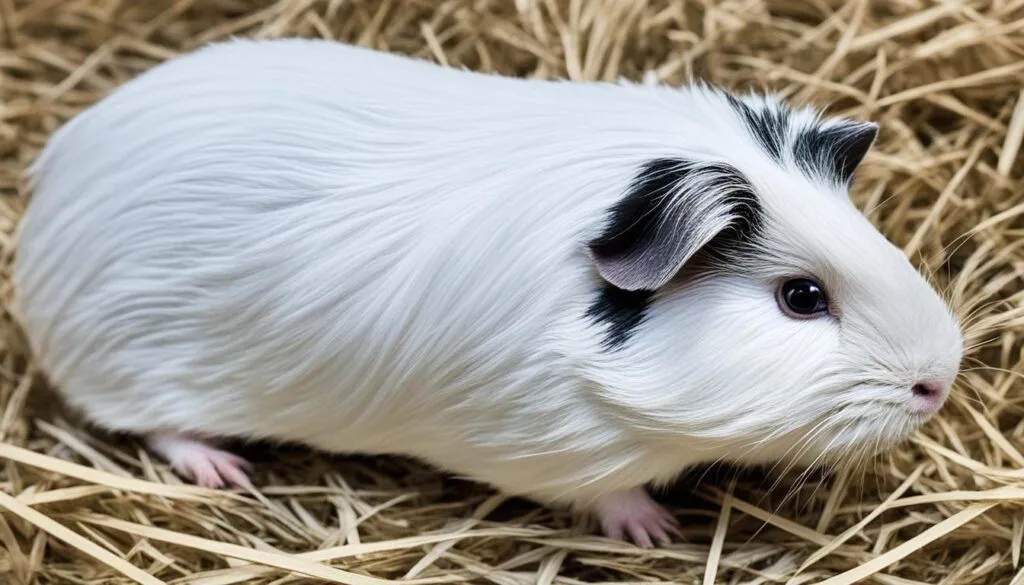
When it comes to identifying lethal whites, there are specific characteristics that set them apart from pink-eyed white guinea pigs. These distinctions can help prospective owners and breeders recognize and understand the unique needs of these special animals.
One of the most noticeable attributes of lethal whites is their smaller, dull, reddish-blue eyes. These eyes may appear sunken in the skull, giving them a distinct appearance. Additionally, some lethal whites may exhibit a head tilt, which can be indicative of underlying neurological issues they may face.
Another telltale sign of a lethal white guinea pig is the presence of teeth deformities or missing teeth. Dental issues are common among lethal whites and may require ongoing treatment and specialized care.
Perhaps the most critical characteristic is that lethal whites are born blind and deaf. These sensory impairments necessitate a heightened level of attention and care from their owners. From creating a safe living environment to providing appropriate feeding and dental treatment, the well-being of a lethal white guinea pig requires dedication and support.
As responsible pet owners and breeders, it is vital to be able to recognize these distinguishing features of lethal whites. By understanding their unique characteristics, we can provide the necessary care and support these precious animals require, ensuring they live the best lives possible.
Roan, Dalmatian, and Hidden Varieties
Guinea pigs come in a wide array of visual appearances, adding charm and diversity to the world of pet rodents. Among the fascinating varieties are the roan guinea pigs, recognized for their dappled fur pattern. These guinea pigs have speckles of white fur on a solid-colored base, creating a striking visual effect.
On the other end of the spectrum, we have the dalmatian guinea pigs. True to their name, dalmatians have a coat with white fur adorned by black spots or markings, reminiscent of the iconic dogs. These unique guinea pigs capture attention with their striking resemblance to their canine counterparts.
But there is more to the guinea pig world than meets the eye. Some guinea pigs possess predominantly white fur, giving them the appearance of being completely white. However, hidden within their snowy coats, the roan gene expresses itself, leading to areas of speckled fur where the white fur was already present. These hidden roans are a captivating surprise for those who observe their ever-changing coat patterns.
Comparing Roan and Dalmatian Guinea Pigs
To delve deeper into the distinctive characteristics of roan and dalmatian guinea pigs, let’s compare them side by side in a table:
| Roan Guinea Pigs | Dalmatian Guinea Pigs |
|---|---|
| Speckles of white fur on a solid-colored base | White fur with black spots or markings |
| Unique and visually captivating coat patterns | |
| Can be found in various breeds, such as American, Abyssinian, and Peruvian | Breed variations include American and Abyssinian, among others |
| Appealing to those who love the contrasting dappled look | Ideal choice for fans of the iconic dalmatian coat pattern |
Whether you’re captivated by the speckled beauty of roan guinea pigs, drawn to the distinctive markings of dalmatians, or fascinated by the hidden roans with their surprise coat patterns, these varieties offer a delightful range of visual splendor in the guinea pig world.
How to Care for Lethal Whites
Caring for a lethal white guinea pig requires commitment and specialized care. These unique pets have special needs that require attention and veterinary support. Here are some essential guidelines for providing the best care for your lethal white guinea pig:
1. Consistent Cage Layout and Environment
Creating a consistent and familiar environment is crucial for the well-being of lethal whites. Since they have visual limitations, it’s important to maintain a consistent layout in their cage. Avoid moving their food and water dishes or rearranging the cage frequently, as it may disorient them. Provide hiding spots and ramps to help them navigate their environment safely.
2. Dental Care and Modified Diet
Lethal whites often have dental issues due to their genetic traits. Regular dental check-ups and dental trims are essential for maintaining their oral health. Additionally, a modified diet with softer textures can help prevent dental problems and ensure they receive the proper nutrition. Consult with a veterinarian experienced in guinea pig care for dietary recommendations.
3. Regular Veterinary Check-ups
Lethal whites require regular veterinary check-ups to monitor their overall health and to address any potential complications. These check-ups are essential for early detection and intervention, ensuring the best quality of life for your guinea pig.
4. Specialized Feeding
Due to their unique needs, lethal whites may require specialized feeding. Some may have difficulty with certain foods, while others may require supplemental nutrition. Consult with a veterinarian knowledgeable in guinea pig care to create a balanced and appropriate feeding regimen for your lethal white.
5. Sensory Stimulation
Lethal whites may be blind and deaf, but they still benefit from sensory stimulation. Provide toys and enrichment activities that appeal to their other senses, such as toys that produce sounds, textured bedding, and scented objects. This will help keep them mentally and physically engaged, promoting their overall well-being.
Remember, providing a loving and supportive environment is essential for the well-being of your lethal white guinea pig. Educate yourself about their unique needs, seek guidance from experienced veterinarians, and be attentive to their specific requirements. With proper care and attention, you can ensure a happy and fulfilling life for your lethal white companion.
Conclusion
Roan guinea pigs are beautiful and unique pets that come in various breeds, showcasing their dappled beauty. Whether it’s the American, Abyssinian, or Peruvian guinea pig, each breed adds its own charm to the guinea pig community. The roaning genetic trait, which creates a speckled pattern of white fur on a solid-colored base, is a fascinating feature that sets roan guinea pigs apart.
However, responsible breeding is essential when it comes to roan guinea pigs. Breeding two roans together can result in the birth of lethal whites, guinea pigs with significant health challenges. Lethal whites are born completely white, with red-bluish eyes due to a lack of skin pigmentation. They often suffer from blindness, deafness, and other birth defects.
To ensure the well-being of roan guinea pigs and the overall guinea pig community, it is crucial to prioritize responsible breeding practices. By avoiding the breeding of two roans, breeders can prevent the birth of lethal whites and protect the future generations from unnecessary health risks.
With proper care and responsible breeding, roan guinea pigs can continue to bring joy and delight to pet owners worldwide. Their unique varieties and dappled beauty make them a popular choice among guinea pig enthusiasts. Remember, responsible breeding is a crucial aspect of maintaining the health and well-being of these adorable and fascinating pets.
Pet Rodents: A World of Variety and Charm
Guinea pigs are just one example of the diverse world of pet rodents. These adorable creatures come in different breeds, each with its own unique charm. Whether you prefer the playful nature of an American guinea pig, the intelligence of a fancy rat, or the cuddliness of a Syrian hamster, there is a pet rodent to suit every pet lover’s preference.
Cavy varieties, such as the roan guinea pig we explored earlier, showcase the vast array of coat types that exist. From the dappled beauty of a roan’s speckled fur to the smooth and sleek coat of a hairless rat, pet rodents come in a wide range of textures and colors. It’s fascinating to see the different aesthetics that nature has bestowed upon these little companions.
When considering a pet rodent, it’s important to be well-informed about their specific care requirements. Just like any pet, they have their distinct needs. Some may require a spacious habitat, while others might thrive in a smaller enclosure. Understanding their dietary preferences, exercise needs, and socialization requirements will ensure a happy and healthy life for your furry friend.
Exotic pet care is a responsibility that should not be taken lightly. Pet rodents rely on their owners for their well-being, and it’s our duty to provide them with the love, care, and attention they deserve. By being informed about their needs and seeking proper veterinary care, we can create a nurturing environment where pet rodents can thrive and bring joy to our lives.
Frequently Asked Questions
What breeds of guinea pigs have the roan gene?
Guinea pig breeds such as American, Abyssinian, Peruvian, and more may have the roan gene, which produces the unique dappled fur pattern known as roaning.
How many guinea pig breeds are officially recognized?
The number of recognized guinea pig breeds varies by country and association. The American Cavy Breeders Association recognizes 13 breeds, while the British Cavy Council recognizes over 40 breeds.
What is roaning in guinea pigs?
Roaning refers to the speckling of white fur on a guinea pig’s coat. It is caused by the presence of the roan gene and can occur all over the body or in limited places.
What are lethal whites in guinea pigs?
Lethal whites are guinea pigs born from the breeding of two roan guinea pigs or two dalmatian guinea pigs. They are completely white with red-bluish eyes and have a range of birth defects and health challenges.
How can lethal whites be distinguished from pink-eyed whites?
Lethal whites have smaller, dull, reddish-blue eyes and may exhibit head tilt, teeth deformities, and blindness. Pink-eyed whites, on the other hand, have larger and brighter pink eyes.
What are the different varieties of guinea pigs?
Roan guinea pigs have dappled fur, dalmatian guinea pigs have white fur with black spots, and hidden roans may have roaning in areas that are already white.
How do you care for a lethal white guinea pig?
Caring for a lethal white guinea pig requires commitment and specialized care, including maintaining a consistent cage layout, providing a modified diet, and regular veterinary check-ups.
Why is responsible breeding important for roan guinea pigs?
Breeding two roan guinea pigs together can result in the birth of lethal whites with significant health challenges. Responsible breeding practices help ensure the well-being of guinea pigs and the overall guinea pig community.
What other pet rodents are there besides guinea pigs?
There is a diverse world of pet rodents, including fancy rats, Syrian hamsters, and more. Each brings its own charm and companionship, and responsible pet owners should be knowledgeable about their specific care needs.

